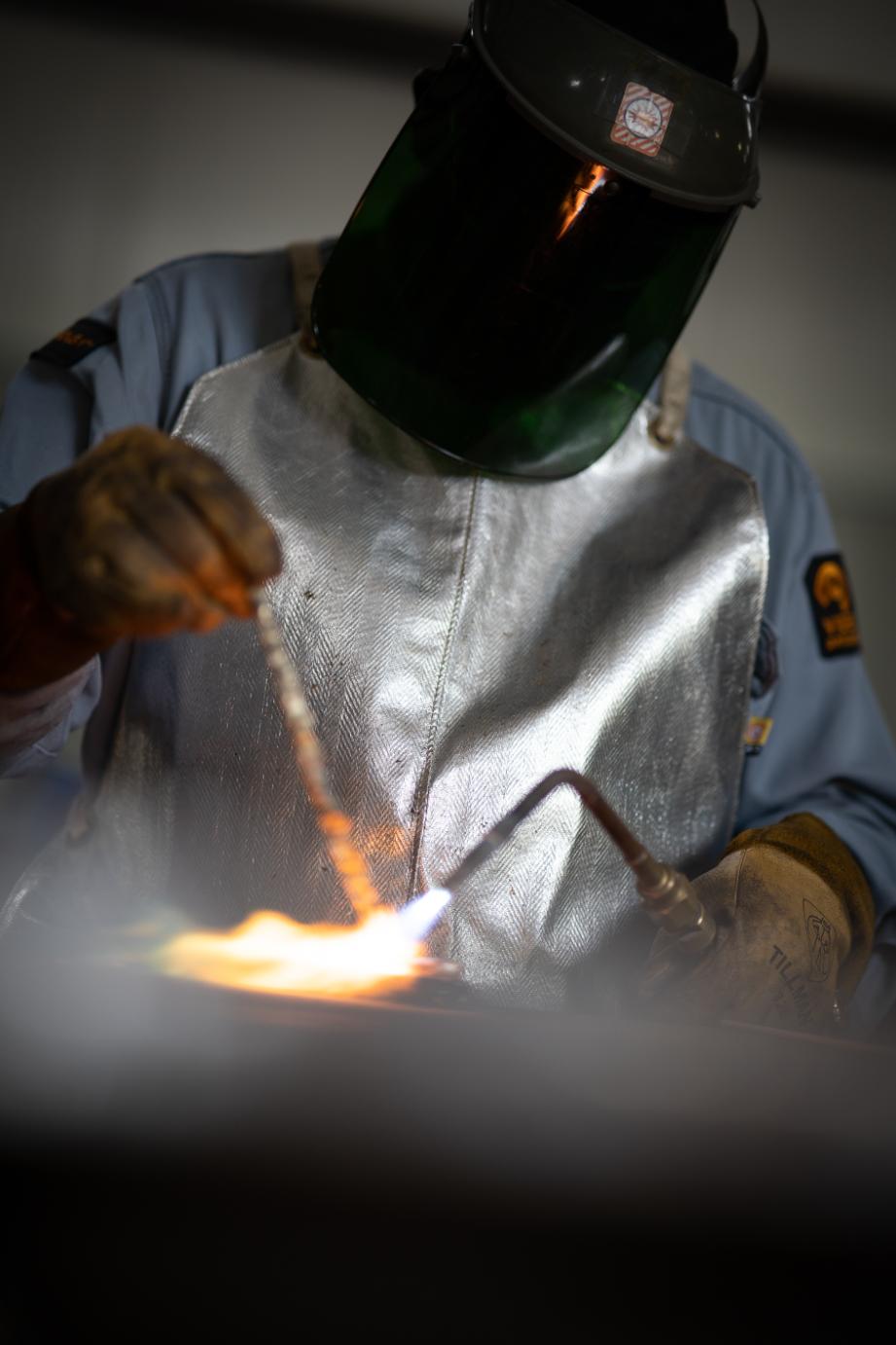The application of carbide to downhole milling tools while seemingly a simple process, in fact takes immense skill, patience and years of experience to perfect. Abrado is fortunate to tap into the expertise of Harold Anderson, our very own carbide brazing specialist. With years of experience under his belt, we learn more about the difference between traditional welding and carbide brazing and what this means for Abrado’s Medusa Section Milling technology.
What is your experience of carbide brazing?
“I started to learn the craft of welding straight out of school. First welding joints of casing offshore in the Gulf of Mexico, then welding cones on underreamer arms with Smith International. At Smith, I first discovered the art of carbide brazing and its application on milling tools. It wasn’t long before a senior welder taught me the skill. Carbide brazing soon became my trade, and I spent 25 years applying my knowledge on various milling instruments such as reamers and fishing tools. After the pandemic downturn, I returned to traditional welding but realized that my knowledge and expertise in carbide brazing was where I could bring the most value to a company and what I felt happiest doing. I was delighted to join Abrado in 2020, where I could apply my knowledge toward our Medusa milling technology.”
What makes carbide brazing different from traditional welding?
“When carbide brazing, we melt a nickel silver rod onto the workpiece and position the carbide pieces to achieve the ideal finish for milling applications. The temperature when brazing is critical and tend to be much hotter than traditional welding. Correctly controlling the temperature is essential; if the heat dips too low, it can cause incomplete bonding. Alternatively, if it’s too hot, it can affect the integrity of the carbide or even crack the base metal. Aligning the carbide takes years of skill and experience. When working with crushed carbide, it’s imperative to align the carbide pieces to have a level but rough finish. Alternatively, when brazing inserts, it’s vital to maintain its orientation according to our design engineers’ specifications. Carbide brazing is certainly an intricate process, but one I thoroughly enjoy!”
What’s the importance of the carbide dressing process?
“The carbide dressing process is where the rubber meets the road, or in this case, where the carbide meets the steel! It makes a significant difference in a tools overall performance, meaning we can achieve the best performance on behalf of our clients.”
How do you apply your expertise and experience at Abrado?
“Our team spends a lot of time modelling and simulating different cutting structures and designs, and it’s my job to bring their designs to life on the tool. Since I’ve joined Abrado, I’ve been impressed by the organization’s overall mindset. We use the term ‘Operations Excellence’ in our field execution and on the shop floor. In my role, this means attention to detail and adherence to processes and procedures. I’m pleased to work for a company like Abrado that values my skillset, and I look forward to continuing doing my part.”

